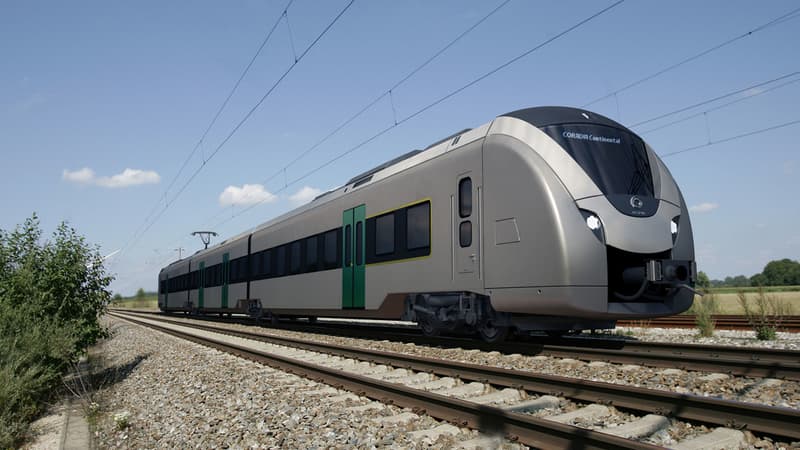European railway companies are now engaged in a major effort to decarbonise their energies. Through the electricity purchased to tow its trains but also to replace the old diesel thermal engine trains that are still very numerous in the Old Continent where 40% of the network is not electrified.
In these lines impossible to electrify (1 million euros per kilometer) there are of course hydrogen trains. This specialty of the French Alstom is beginning to be a commercial reality, especially in Germany, but also soon in France, Sweden, Italy and why not in Saudi Arabia.
At the same time, other solutions are emerging. Like the battery-powered trains that are technically and economically viable today and that find buyers in Europe.
Dozens of battery-powered regional trains in Spain and Germany
The Spanish industrialist CAF has just sold 28 copies (and 42 as an option) to Renfe, the Spanish national railway operator. Amount of the contract: 290 million euros.
These trains, 100% equipped with lithium-ion batteries, are intended to travel short distances in complete autonomy on non-electrified tracks or to compensate for power outages. They can reach a maximum speed of 200 km/h but the manufacturer does not specify the autonomy of these trains.
“This new contract, which is added to the order for 70 battery-powered trains obtained in Germany, demonstrates the attractiveness of this solution offered by CAF to European railway authorities and operators”, underlines the Spanish company.
“With this project, Renfe continues with its ambitious investment plan, which foresees the renewal of a large part of its fleet of trains, also betting on units that are more respectful of the environment to guarantee more sustainable transport,” he continues. .
Its competitor Alstom is not far behind as it will manufacture, deliver and maintain 11 battery electric trains for the Leipzig-Chemnitz line in Germany for around 100 million euros (contract won in 2020).
Hybrid diesel and battery trains in France
In France, Alstom is also working on this type of train with five partner regions: Auvergne-Rhône-Alpes, Hauts-de-France, Nouvelle-Aquitaine, Occitanie and Provence-Alpes-Côte d’Azur.
The project consists of removing the diesel engines from the trains, replacing them with 4 battery units and adding 2 high-power chargers, necessary to transfer energy between the batteries, the traction equipment and the pantograph. The train control and command system must also be adapted.
Remember that the SNCF wants to completely eliminate diesel by 2035 and reach zero CO2 emissions by 2050.
The manufacturer has also considered a hybrid approach (battery and diesel).
It allows existing diesel trains to be adapted to battery technology. A kind of recondition cheaper than the purchase of new trains by the transport authorities.
SNCF and Alstom have been working on the issue for a year in collaboration with four regions (Grand Est, New Aquitaine, Center Val-de-Loire and Occitanie-Pyrénées).
After 8 months of conclusive tests and 10,000 kilometers traveled by a prototype, the technical aspect of the project has been validated.
How does it work? The hybridization of the train consists of replacing half of the combustion engines with energy storage systems made up of lithium-ion batteries. The latter are powered by the energy generated by the braking of the trains. The recovery rate reaches 90%.
SNCF wants to get out of diesel in 2035
230 Alstom regional diesel trains currently running on the network can now be converted to hybrid trains.
Partner regions will be able to “place an order” to modernize these trains. The goal is to launch the commercial service in the second quarter of 2023, first in partner regions.
But since the sale of Alstom’s Reichshoffen plant to the CAF group (August 1, 2022), this project has become the responsibility of the Spanish industrialist.
However, the hybrid TER is in its final testing phase on the national rail network, which will allow SNCF Voyageurs to request the necessary authorizations for its commercial operation.
The start of the experimental commercial service should take place in the second quarter of 2023 with circulation in each of the project’s partner Regions.
At the moment, no firm order of regions has yet been signed. But in a context where the regions are strangled by the energy bill, this solution makes sense. As in New Aquitaine, which intends to put its twenty trains into circulation.
Source: BFM TV


